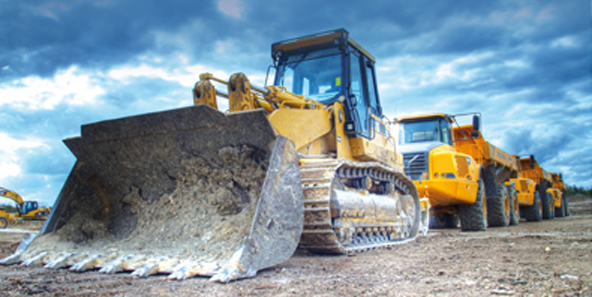The Indian construction industry is highly fragmented. This is partially due to the fact that, for most projects, there are no long-term relationships between the contractors and clients. This is partially due to the fact that the sector in many cases lacks economies of scale. Thus, smaller players may have better cost structures due to lower overhead costs.
Furthermore, one has to differentiate between the organized and the unorganized segment of the sector. The organized segment consists of firms and independent contractors who manage their business on a more professional basis and operate on small and medium as well as large scales. The unorganized segment primarily consists of stand-alone contractors that operate at a small scale.
As far as demand for construction equipment is concerned, India, as the world’s seventh largest country by area and the second biggest by population, is one of the most dynamically growing but largely untapped construction equipment markets. In the recent years, the country has witnessed massive investment in the construction industry from both public and private enterprises. Multi-billion dollar investments in constructing roads, ports and power plants and in developing the telecommunication sector and urban infrastructure have paved the way for the construction equipment demand to grow phenomenally. Industry experts predict a faster market growth in the coming years. From 2010 to 2020 it is estimated to grow six times to a size to $20-25 billion.
The Indian construction equipment industry has been witnessing a consistent double-digit growth over the past few years. Though the economic slowdown had its moderate effect on the industry, it regained momentum in 2010, showing a stupendous growth which is expected to continue in the years to come.
The earth-moving segment, in particular, has been driving the overall construction equipment industry in India, with strong demand emanating from the Government-backed infrastructure projects. The segment is poised to register a remarkable compound annual growth rate of around 21 per cent during 2011-2015.
Also expected is significant growth of infrastructure. The current Five-Year Plan which covers the period up until 2017 envisages doubling of investments in this sector. Big investments are planned to expand the energy and water supply as well as roads. Further, more ports and airports are being built.
It is a major task for the construction equipment industry to adapt to the expected growth. India’s worldwide market share in the industry already tripled to six per cent from 2004 to 2010 and will continue to grow. Companies therefore have to adapt on multiple fronts. One of them is the collaboration with suppliers and another is improving the competitiveness. This means, for example, development of new products to suit the customer demands and to continuously upgrade the skills of the sales force.
